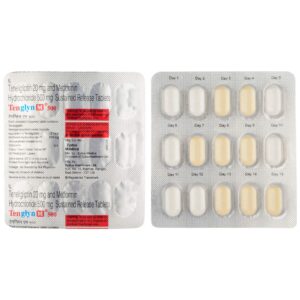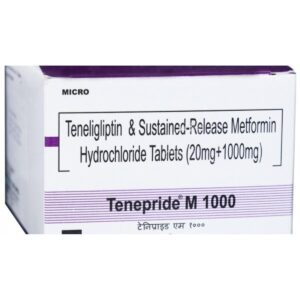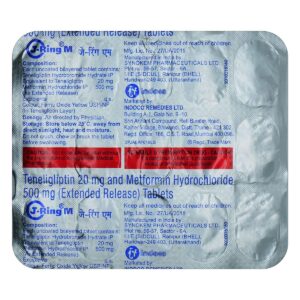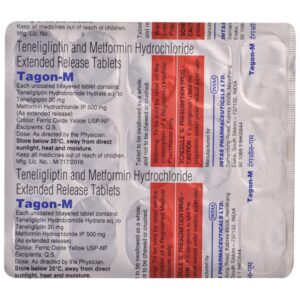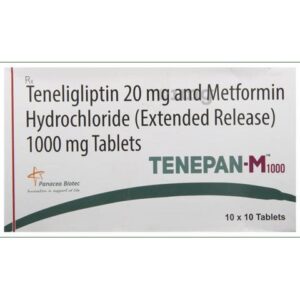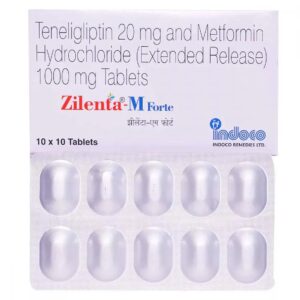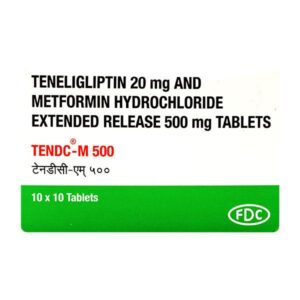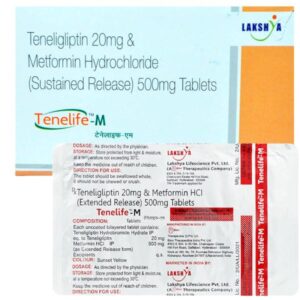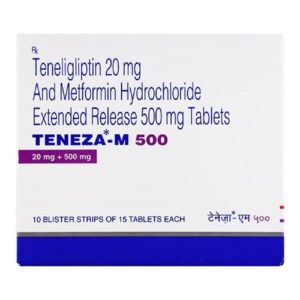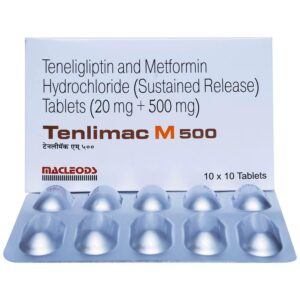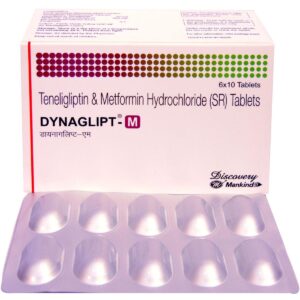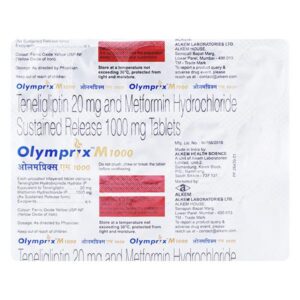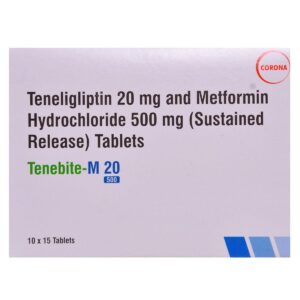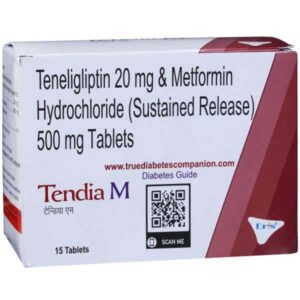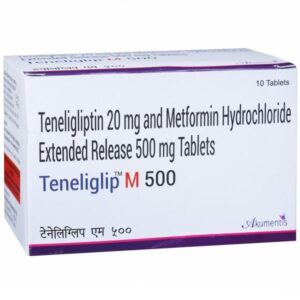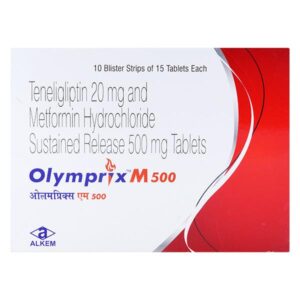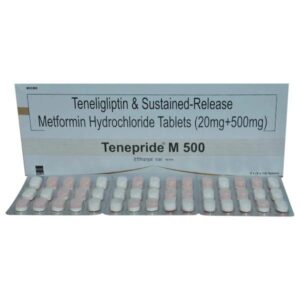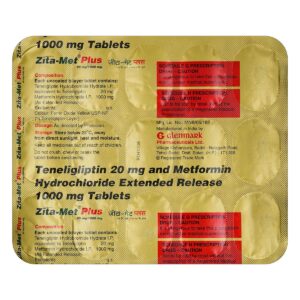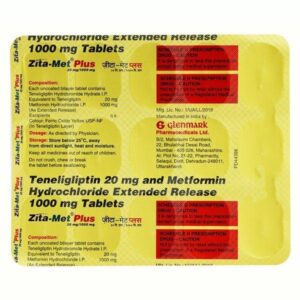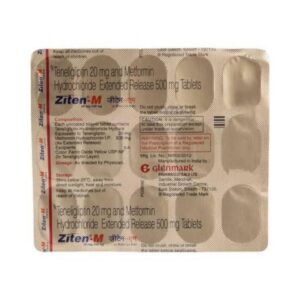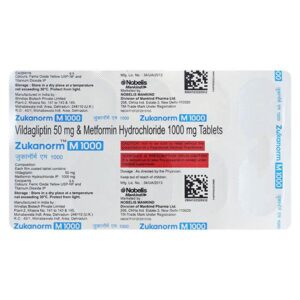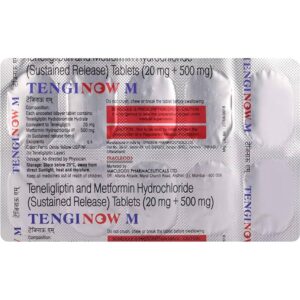METFORMIN + TENELIGLIPTIN
Metformin: Metformin is a medication commonly prescribed for the treatment of type 2 diabetes. It is also sometimes used off-label for the management of polycystic ovary syndrome (PCOS) and weight loss.
The primary mechanism of action of Metformin is to lower blood glucose levels by decreasing the production and absorption of glucose in the liver, as well as increasing insulin sensitivity in the body’s tissues. It does not stimulate the production of insulin, but rather reduces the amount of glucose that the liver releases into the bloodstream.
The usual starting dose of Metformin for diabetes is 500 mg to 850 mg once or twice daily, with meals. This can gradually be increased to a maximum daily dose of 2,000 mg, depending on the individual’s response and tolerance. Extended-release formulations are also available, which can be administered once daily.
Some common side effects of Metformin include gastrointestinal symptoms such as diarrhea, nausea, vomiting, and abdominal discomfort. These side effects can often be minimized by taking the medication with meals or by starting with a low dose and gradually increasing it. In rare cases, Metformin can cause a serious condition called lactic acidosis, characterized by symptoms like rapid breathing, muscle pain, weakness, and a general feeling of being unwell. It is important to seek immediate medical attention if these symptoms occur.
Overall, Metformin is a widely used and effective medication for the management of type 2 diabetes. However, as with any medication, it is important to consult with a healthcare professional for personalized dosing instructions and to discuss potential risks and benefits.
Teneligliptin: Teneligliptin is an oral antidiabetic drug that belongs to the class of drugs known as dipeptidyl peptidase-4 (DPP-4) inhibitors. It is primarily used for the management of type 2 diabetes mellitus.
The mechanism of action of Teneligliptin involves the inhibition of the enzyme DPP-4. DPP-4 is responsible for breaking down the incretin hormones GLP-1 (glucagon-like peptide-1) and GIP (glucose-dependent insulinotropic peptide). By inhibiting DPP-4, Teneligliptin increases the concentrations of these incretin hormones, thereby enhancing their effect. GLP-1 and GIP stimulate the release of insulin from pancreatic beta cells and suppress the release of glucagon, leading to better glycemic control.
Teneligliptin is typically administered orally in the form of tablets. The usual recommended dose is 20 mg once daily before or after a meal. However, the specific dosage may vary depending on individual patient factors, such as renal function.
Common side effects associated with Teneligliptin include headache, dizziness, nausea, vomiting, diarrhea, and upper respiratory tract infections. These side effects are usually mild and tend to resolve on their own.
In rare cases, Teneligliptin has been associated with more serious side effects, including pancreatitis (inflammation of the pancreas), allergic reactions, and severe joint pain. Patients should be monitored for signs of these adverse events.
It is important to note that Teneligliptin should not be used in patients with type 1 diabetes or diabetic ketoacidosis. Additionally, caution should be exercised when using Teneligliptin in patients with impaired renal function.
As with any medication, it is crucial to consult a healthcare professional before starting or making any changes to the medication regimen. They can provide personalized recommendations and monitor for any potential drug interactions or contraindications.

